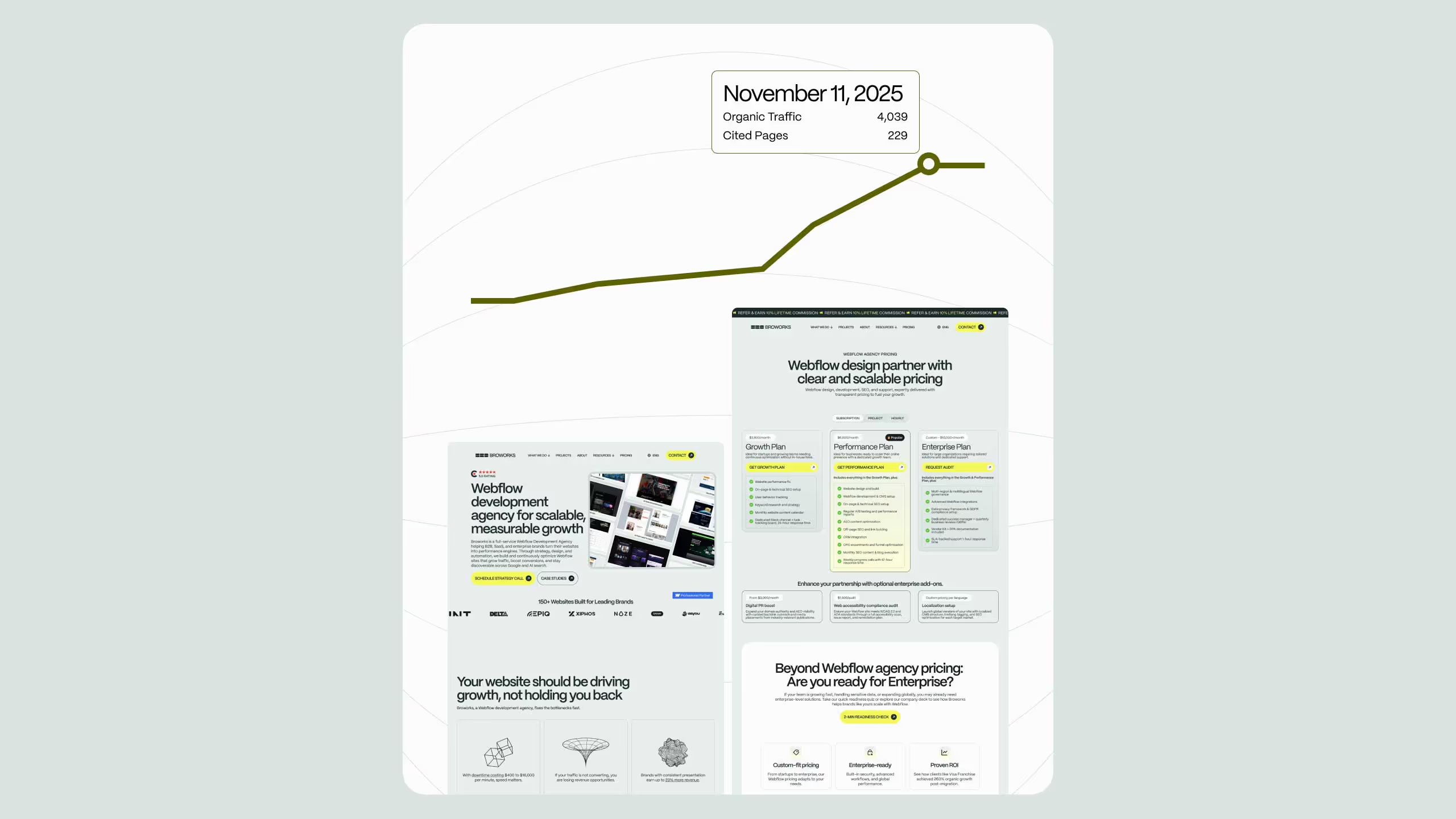Webflow’s ecommerce 2024. Expert’s breakdown

Webflow isn’t a full-fledged e-commerce platform, it’s primarily a visual web design and CMS tool with added e-commerce capabilities. While it offers beautiful design freedom, CMS-driven product management, and solid SEO tools, it lacks advanced e-commerce features like diverse payment gateways and checkout customization. Webflow e-commerce works best for small to mid-sized stores that prioritize branding and marketing design over complex store operations. For scalable stores, integrating Shopify or another dedicated e-commerce solution often delivers the best of both worlds.
First things first, Webflow is not an ecommerce platform, it’s a website development tool mainly created for marketing websites but has an ecommerce functionality.
Let’s take a deep dive and see what it has to offer and if you can use it for e-commerce websites in 2024.
Webflow ecommerce functionality
For those who didn’t know, Webflow has an e-commerce option with which you can do quite a lot, but when it comes to what you can really do with it, it forms a lot of questions.
Webflow is not an ecommerce platform, keep that in mind, however there are a lot of things you can still do with it and decide to choose it among competition.
Let’s breakdown a couple of things first:
- Payment options. This is one of the downsides of Webflow ecommerce since it’s providing only two payment options on checkout, which is Stripe and PayPal, unlike its competitors which provide many more options, like credit card, Klarna, Apple Pay, Google Pay, etc.
- Checkout process. They have a decent amount of screens and processes when it comes to this, but it’s a bit limited to what you can customize or add that will be shown in your summary page without a custom code. It’s a bit of a downside for Webflow and hopefully will be improved in the future.
- App marketplace. At the end of 2023 they introduced the app store and since then many apps have been added and they will continue to improve upon it, but for now they are still missing a few quite major apps like HubSpot, MailChimp, etc.
- Design flexibility. You can fully customize your online shop without encountering any design limitations.
- Powerful CMS. With their great content management system you can easily manage products on your own, without technical background.
- Great SEO. By default, Webflow has a very well optimized SEO and offers a wide range of tools to further improve organic rankings.
Webflow has plenty of ecommerce features for simpler online stores, but their customization options and focus on design elements is what makes them stand out among competitors.
They may lack some specific ecommerce functionalities, like payment options, checkout process or even different store management tools, but they make up for it with other marketing tools. On top of that, you can integrate Shopify for example and have both Webflow functionalities and Shopify ecommerce options.
Ecommerce pricing plans
To be honest, they have competitive pricing plans that are not way too expensive and gives you all the things you need for an online store.
They offer three types of plans, let’s take a look at what they offer:
- Standard plan. It starts with $29 per month annually or $49 per month monthly. It’s great for small businesses and includes 500 ecommerce items and 2,000 CMS items. It offers customizable checkout, shopping cart, email templates, various integrations (Facebook, Instagram, Google shopping, and Mailchimp), and has a 2% transaction fee plus Stripe and PayPal fees.
- Plus plan. Costs $74 per month annually or $84 per month monthly. Best for growing businesses and includes 5,000 ecommerce items and 10,000 CMS items. There are no transaction fees but Stripe and PayPal fees still may apply. On top of that it includes more staff accounts and removal of Webflow branding from email footer.
- Advanced plan. Costs $212 per month annually or $235 per month monthly. It’s designed for large businesses offering up to 15,000 ecommerce items and 10,000 CMS items. There are no transaction fees and provides the highest level of scalability with uncapped annual sales volume and expanded features.
Ecommerce templates
Webflow offers a variety of templates, both free and premium for various website needs. All these templates are customizable, allowing you to edit text, images, layout, and adjust design to your needs.
Although Webflow has templates, using them is great for small businesses but it’s better to custom design your website in Webflow and use it’s full potential since customization and flexibility is probably one of the main reasons why you are considering Webflow in the first place.
SEO capabilities
Webflow has great on-page SEO capabilities allowing users to effectively optimize their website for search engines.
Here are some of the best practices to include in your process:
- Sitemap. Webflow has an option to generate sitemap automatically or you can add your own custom one, either way adding a sitemap is making your website more visible and crawlable by search engines.
- Robots.txt file. You can optimize the crawling and indexing process by creating a robots.txt file, guiding search engine bots on which pages to index.
- Website structure. It allows you to organize your website well by using proper H titles across the pages and structuring your classes with a style guide, which enhances user experience and search engine accessibility.
- HTTPS usage. Webflow supports HTTPS, enhancing both security and search ranking.
- Mobile friendly design. Mobile friendly designs has became essential for all websites and Webflow offers an extensive set of options that support responsive design.
- Image optimization. Webflow provides tools for image compression and adding alt text to the images, which improves page load speed and accessibility.
- 301 redirect and canonical tag. With these features your SEO will maintain great performance during site changes and managing duplicate content.
- CMS optimization. Their CMS capabilities allows creating content-reach blog posts for SEO proper formatting, headers and keyword incorporation.
Customer service
Webflow offers various support for their users, from an extensive range of online resources, including Webflow University, which features courses and tutorials, to community forum for peer support and dedicated support team. Webflow empowers users with educational resources and community-based solutions.
Besides that, support is always available via phone for US users and via email for everyone.
Conclusion
It is very clear by now that Webflow is not an ecommerce platform, that doesn’t mean they will never be that but their focus is more in creating marketing websites then ecommerce. They offer some ecommerce tools that can be very powerful for some businesses but in most cases people will not choose to go with it.
If you still want to use Webflow for its impeccable customization options and editing functionalities when the website is created, you can explore various plugins to integrate Shopify functionality for the e-commerce part if what they have to offer is not enough.

.svg)
.svg)


.svg)




